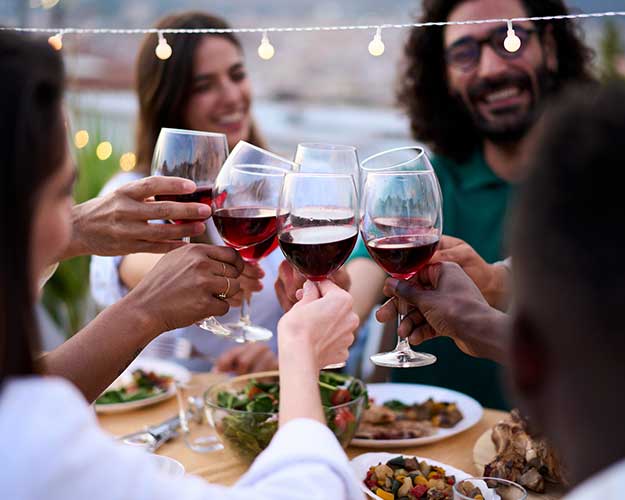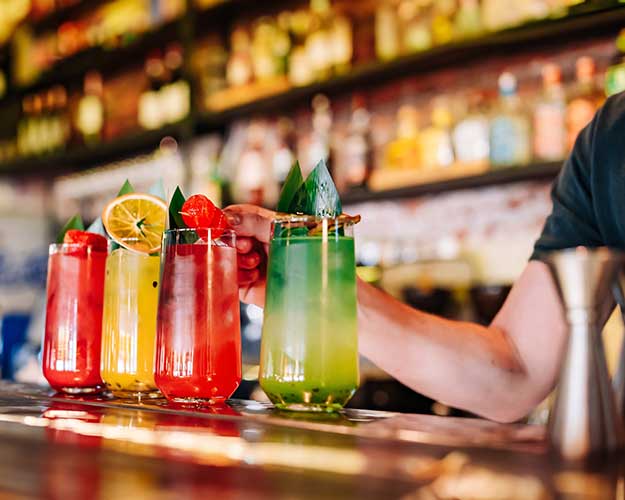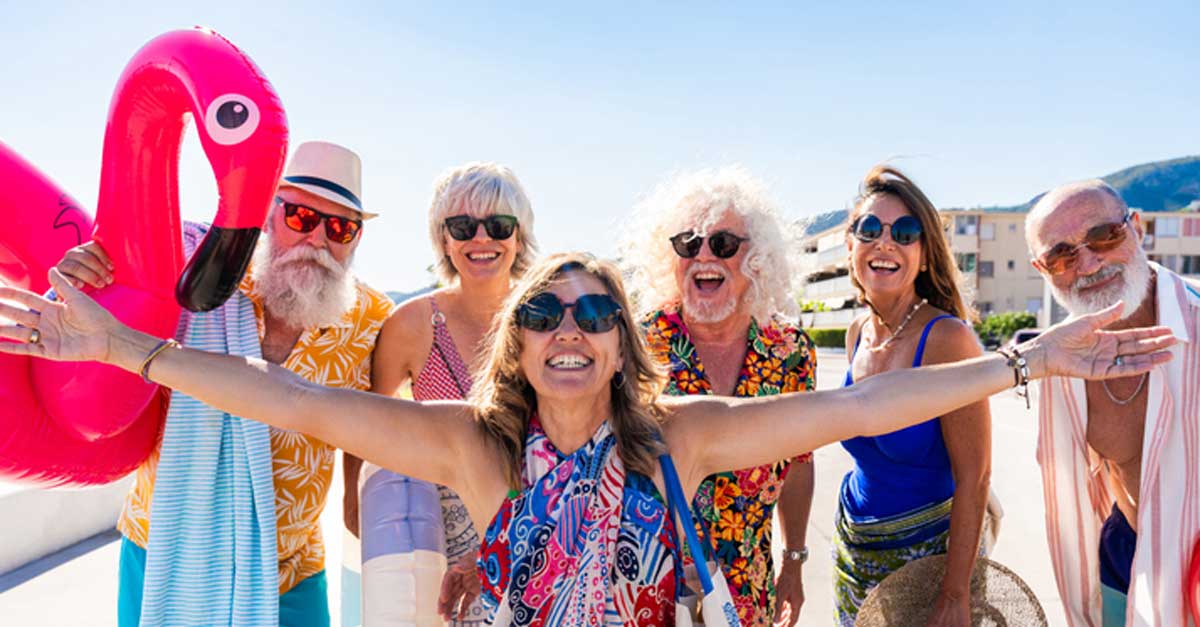Does Alcohol Cause Cancer
Most people are aware that “binge drinking” or having too much alcohol in a brief period can cause alcohol poisoning and be deadly. With the average calorie count in a standard drink ranging from 90 to 200 calories, it’s a well-known contributor to weight gain. Yet, research confirms that less than half of all Americans know that long-term consumption of alcohol can raise both cancer and death risk.
Alcohol use is, in fact, a leading preventable cause of cancer in the U.S.—contributing to 100,000 cancer cases and about 20,000 cancer deaths each year.

Understanding Alcohol
The most common alcoholic drinks include beer, wine and spirits, also known as hard liquor. Ready-to-drink alcoholic beverages, such as canned margaritas and other pre-mixed cocktails, continue to grow in popularity by offering easy access to classic favorites without the need for extensive preparation.
The type of alcohol found in beverages is ethanol, and it’s the primary ingredient that makes people feel intoxicated. Ethanol is a chemical compound that, when consumed, affects the central nervous system, leading to changes in behavior, thinking and motor skills.
On average, the human body can process, or metabolize, about 10 to 15 grams of ethanol per hour. Let’s break down what that actually means:
- A 12-ounce regular beer typically contains about 5% alcohol by volume (ABV), which equates to 14 grams of ethanol.
- One 5-ounce glass of table wine contains about 12% ABV—also equal to 14 grams of ethanol.
- A standard 1.5 ounce shot of hard liquor, vodka, whiskey, tequila, etc., is typically 40% alcohol by volume, or just over 9 grams of ethanol.
Contact Us
Beyond the Buzz: The Real Effects of Alcohol
According to the American Institute for Cancer Research, alcohol increases the risk of developing six common cancers: mouth, throat, liver, colorectal, breast and stomach cancer. There is also evidence suggesting that alcohol increases the risk of developing lung, pancreatic and skin cancers (basal cell carcinoma and malignant melanoma).
Alcohol can cause cancer by different mechanisms. When alcohol is consumed, the body breaks it down into acetaldehyde, a toxic compound that can damage DNA and cause mutations. Excessive alcohol metabolism also produces free radicals, which harm cells and contribute to cancer risk. Alcohol can also act as a solvent, helping harmful substances like tobacco smoke particles enter the body more easily, especially in the mouth and throat. Additionally, alcohol can disrupt hormone levels, such as increasing estrogen, which may raise the risk of breast cancer.
More people need to be aware of the relationship between alcohol consumption and cancer risk when considering whether or how much alcohol to drink. This is especially true for individuals who are more likely to develop certain diseases or conditions because of the genes they inherited from their parents.
There is a generalized belief that drinking red wine is good for heart health due to the potential health benefits from resveratrol, a plant compound found in red wine with antioxidant and anti-inflammatory properties. However, the potential benefits are overshadowed by the increased risk for developing cancer. Red wine is not the only source of resveratrol—consider eating grapes, berries (blueberries, cranberries, strawberries, raspberries), nuts (peanuts and pistachios) or dark chocolate.
The Bottom Line
When it comes to cancer risk, there is no safe amount of alcohol. Therefore, for cancer prevention, it is best not to drink alcohol.
Mocktails are a healthier alternative. These delicious and refreshing drinks can provide hydration, vitamins and naturally-occurring phytochemicals derived from fruits, fruit juices, herbs and spices that may play a role in cancer prevention by acting as antioxidants and reducing inflammation. Herbs and spices rich in phytochemicals include rosemary, mint, basil, turmeric, cardamom, cinnamon, ginger, anise and vanilla, among others.
Unleash your creativity and reduce your cancer risk! Create your own combinations by mixing sparkling water, a fruit or fruit juice, herbs and spices and even a sweetener, if desired.

Five interesting facts*
- Drinking any amount of alcohol can raise cancer risk. Studies show that 17% of alcohol-related cancer deaths per year occur in people who were drinking very little—two drinks or less a day for men and one drink or less a day for women.
- More than 86% of new alcohol-associated cancers occur in people age 50 or older.
- Breast cancer accounts for 60% of alcohol-related cancer deaths in women.
- Together, liver cancer and colorectal cancer account for 54% of alcohol-related cancer deaths in men.
- The risk of breast, mouth and throat cancers starts around one or fewer drinks per day.
*Compiled from U.S. Surgeon General, Centers for Disease Control & Prevention (CDC), U.S. Department of Health & Human Services (DHHS) and the National Cancer Institute.





Comments